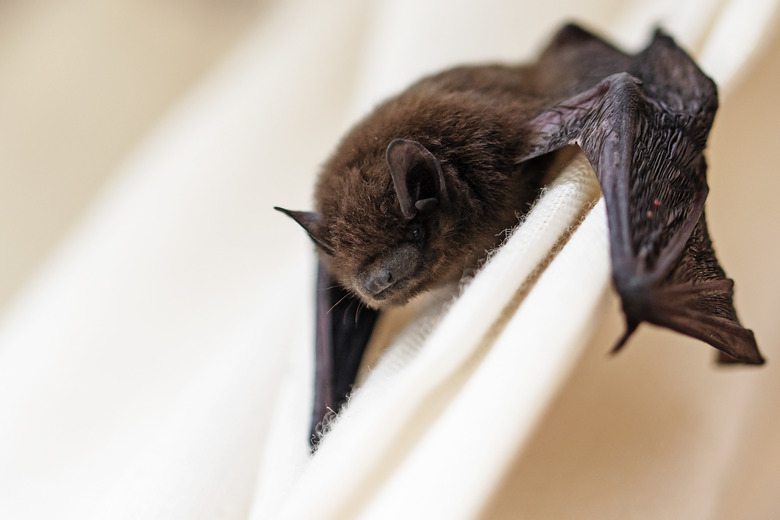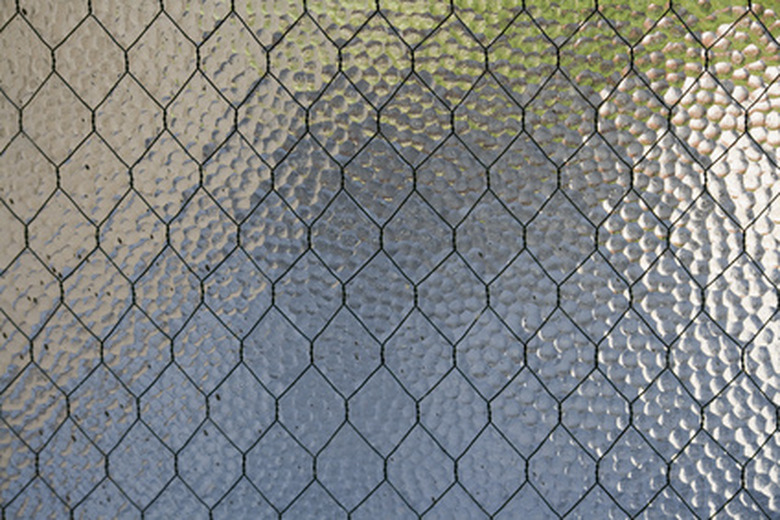How To Get Rid Of Bats In My Basement
Bats are vital to insect control and local ecosystems. Inside a home, they can be dangerous. Seeing a bat in your basement requires quick removal–the potential for rabies is present. Bats may take up residence in a home and possibly be inconspicuous to humans. Installing a bat house outside as a new roosting spot is vital. The bats will continue to control the insect populations yet not be a risk to humans. A single bat may easily be removed; however, a colony may prove more difficult.
Removing a Single Bat
Step 1
Put on thick gloves and long pants. Cover gaps under doorways.
Step 2
Knock the bat onto the floor using a broom. Bats have difficulty flying from the ground. Cover the bat with the fishing net.
Step 3
Release the bat if there is no chance it came into contact with pets or children. Contact the local animal-control authorities if it did; the bat will need to be tested for rabies. Rabies shots may need to be administered if there is a chance the bat came in contact with a human.
Removing a Colony
Step 1
Inspect your home from the outside to see where the bats are coming in. Walk around your home at sunset. (Having several people do this may help to accurately pinpoint entrance points.) Most bats can fit through a hole the size of a human thumb, so you may need to repeat this process for several nights.
Step 2
Hang a bat house near the active entry point. The closer to the entry point the bat house is, the more the bats will be accustomed to seeing it as they come and go. The bat house will become the new roosting point after you evict all the bats. Bat houses can be purchased at garden-supply stores, hardware stores and nature stores.
Step 3
Tape wire mesh over the active openings. The mesh should have very small openings that a bat cannot fit through. Tape three sides, leaving the bottom open for the bats to exit. The bats can leave but will not be able to reenter. Caulk any other small openings thoroughly. Leave the wire mesh open on the bottom for approximately a week, sometimes more. This will allow all the bats to leave the property. When all the bats have left, remove the mesh and fill the hole completely with caulk.
Things Needed
- Wire mesh
- Duct tape
- Caulk
- Bat house
- Broom
- Fishing net or similar net
- Thick gloves
TL;DR (Too Long; Didn't Read)
Professionals may be able to find more entry points than the inexperienced homeowner. Failing to properly rid the bats and seal the holes may cause the bats to move into more living areas of your home.
Warning
Bats are known to carry rabies. Do not attempt to handle a bat with bare hands or allow a child, pet or other human to make contact.
Cite This Article
MLA
Kelly, Jasey. "How To Get Rid Of Bats In My Basement" sciencing.com, https://www.sciencing.com/rid-bats-basement-6318858/. 22 November 2019.
APA
Kelly, Jasey. (2019, November 22). How To Get Rid Of Bats In My Basement. sciencing.com. Retrieved from https://www.sciencing.com/rid-bats-basement-6318858/
Chicago
Kelly, Jasey. How To Get Rid Of Bats In My Basement last modified March 24, 2022. https://www.sciencing.com/rid-bats-basement-6318858/


